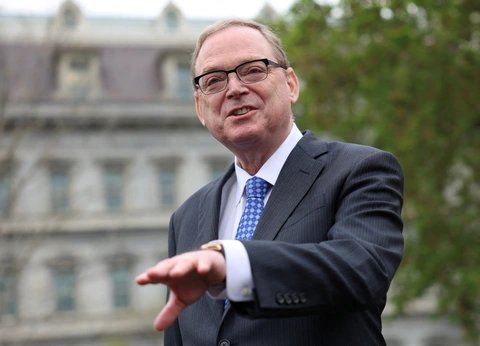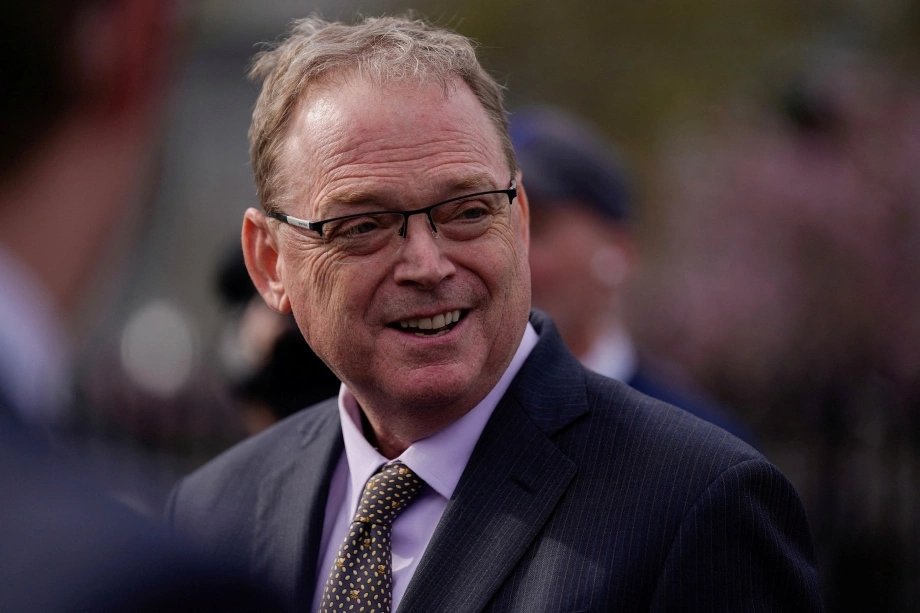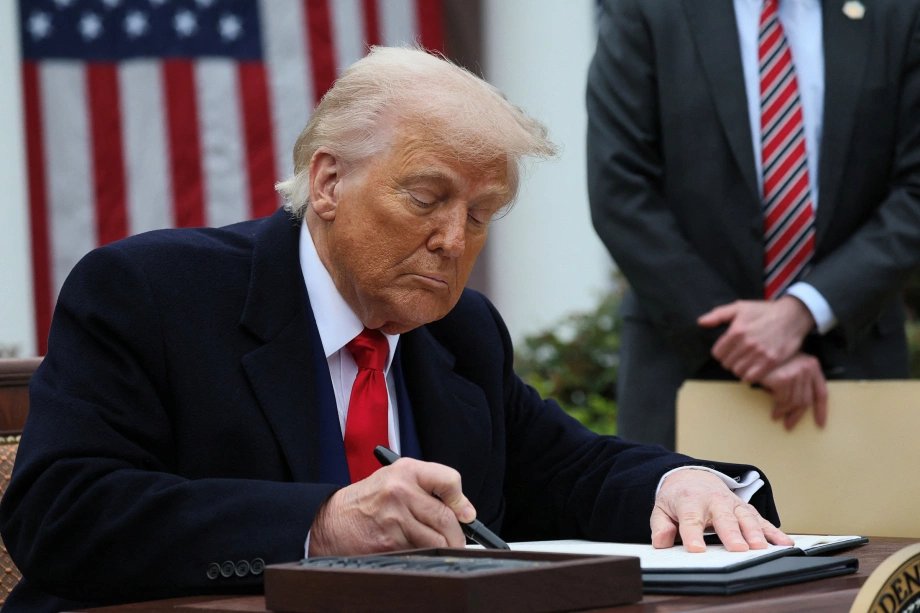In recent months, the question of whether the United States is entering — or already in — a recession has dominated news cycles and fueled political debates. However, according to a top White House economic adviser, the answer is clear: America is not in recession. While the nation continues to grapple with inflation, interest rate hikes, and shifting global dynamics, the fundamentals of the U.S. economy remain strong — at least from the administration’s perspective. So what’s driving this bold assertion? And what does it mean for the average American?
This article takes a comprehensive look into the economic indicators, policy responses, expert analyses, and public sentiment surrounding the recession question, offering a thorough understanding of the current state of the U.S. economy.
### Economic Adviser Makes a Bold Claim

During a press briefing earlier this week, White House economic adviser Jared Bernstein addressed growing concerns about a potential economic downturn. Bernstein emphasized that, despite visible challenges in certain sectors, the broader economy is demonstrating resilience.
He pointed to recent data on GDP growth, employment rates, and consumer spending, arguing that these indicators do not align with a recessionary environment. “We understand the concerns families have about rising costs, but recession is defined not by feelings or fear, but by economic facts,” Bernstein said.
### Defining a Recession: More Than Just Headlines
A key element of the current debate lies in how a recession is actually defined. While many Americans equate a recession with a drop in consumer confidence or a general sense of economic unease, economists use more precise criteria. The National Bureau of Economic Research (NBER) defines a recession as “a significant decline in economic activity that is spread across the economy and lasts more than a few months.”
This includes declines in real GDP, real income, employment, industrial production, and wholesale-retail sales. Based on these measures, Bernstein and other White House officials argue that the U.S. economy does not meet the traditional definition of a recession — at least not yet.
### Job Market Still Thriving
Perhaps the most compelling evidence against the recession narrative is the labor market’s strength. Despite turbulence in financial markets and rising interest rates, unemployment remains near historic lows, and job creation continues to outpace expectations.
In March 2025 alone, the economy added over 270,000 jobs — a figure that indicates not just stability, but growth. Sectors such as healthcare, hospitality, and professional services have seen particularly robust hiring trends.
This resilience in employment plays a crucial role in supporting household spending and consumer confidence, two essential pillars of economic health. As Bernstein noted, “If we were in a recession, you wouldn’t see the kind of job growth we’re witnessing.”
### GDP Growth Defies Expectations

Another indicator cited by the White House economic team is the country’s gross domestic product (GDP). After a rocky start in early 2024, the U.S. economy rebounded with stronger-than-expected growth in the latter half of the year.
According to the Commerce Department, GDP grew at an annualized rate of 2.6% in Q4 2024 and is projected to grow at a moderate pace in early 2025. These numbers may not reflect a booming economy, but they hardly suggest a recession either.
In Bernstein’s words, “Slower growth is not the same as negative growth. There’s a difference between cooling down and collapsing.”
### Inflation: A Lingering Threat
Despite the positive tone from the White House, inflation remains a persistent concern for both policymakers and citizens. While price increases have cooled from their 2022 peak, the cost of essentials like food, housing, and energy continues to strain household budgets.
The Consumer Price Index (CPI) for March 2025 showed a year-over-year increase of 3.8%, slightly higher than the Federal Reserve’s 2% target. However, the core inflation rate, which excludes volatile food and energy prices, has remained more stable.
Bernstein acknowledged the ongoing challenge of inflation but emphasized the administration’s commitment to addressing it. “We’re not ignoring inflation — we’re actively fighting it, and progress is being made,” he stated.
### Federal Reserve Policy and Interest Rates

The Federal Reserve has taken aggressive steps to combat inflation, raising interest rates over the past two years to slow down demand and stabilize prices. These hikes have had ripple effects across the economy, from housing to business investment.
While critics argue that higher rates could tip the economy into recession, Bernstein contends that the Fed’s moves are carefully calibrated. “The goal isn’t to crash the economy. It’s to steer us toward a soft landing — reducing inflation without triggering mass layoffs or deep contraction,” he explained.
As of April 2025, the federal funds rate stands at 5.25%, and the Fed has signaled a pause in further increases, suggesting confidence in current economic trajectories.
### Consumer Spending Shows Confidence
Another reason the White House economic team is dismissing recession fears is the resilience of consumer spending. Despite higher interest rates and inflation, Americans continue to spend — particularly on services like travel, dining, and entertainment.
Retail sales in February and March 2025 exceeded analyst forecasts, signaling that consumer confidence remains intact. This spending, fueled in part by rising wages and pandemic-era savings, is a crucial factor in sustaining economic momentum.
“People don’t spend like this in a recession,” Bernstein said. “They pull back, they hunker down. That’s not what we’re seeing today.”
### Sectoral Disparities and Uneven Recovery
To be clear, not all sectors of the economy are thriving. Industries such as real estate, tech, and manufacturing have shown signs of slowing down or facing restructuring. Layoffs in big tech firms and reduced housing starts have raised alarm bells in some circles.
However, the administration argues that these are signs of rebalancing rather than recession. “An economy as large and diverse as ours will always have areas of strength and weakness,” said Bernstein. “The key is the overall trajectory — and that trajectory is forward.”
### Political Implications of the Recession Debate

The debate over whether America is in recession is not just economic — it’s deeply political. With the 2024 presidential election still fresh and 2026 midterms looming, both parties are using the economy as a key messaging point.
Republican leaders have accused the Biden administration of downplaying economic pain and misrepresenting data to suit a political narrative. Meanwhile, Democrats argue that the opposition is fearmongering and undermining progress to score points.
Bernstein, however, insists that the data speaks for itself: “This isn’t about spin. It’s about facts. And the facts tell us we’re not in a recession.”
### What Experts Outside the White House Are Saying
Outside of government circles, economists are divided. Some agree with the White House’s assessment, pointing to the job market and GDP growth. Others are more cautious, warning that lagging indicators or geopolitical risks could trigger a downturn in the near future.
For example, Moody’s Analytics chief economist Mark Zandi has stated that the economy is “navigating headwinds successfully” and is not in a recession, but he notes that consumer debt and global instability could pose risks.
Meanwhile, analysts at Goldman Sachs have lowered the probability of a recession in 2025 from 40% to 25%, citing recent economic data as encouraging.
### Public Perception vs. Economic Reality
Perhaps the greatest challenge for the White House is bridging the gap between economic data and public sentiment. For many Americans, the experience of high prices, rising rents, and job insecurity feels like a recession — even if it isn’t one by technical standards.
A recent Gallup poll showed that 62% of Americans believe the country is either in a recession or headed for one, highlighting the disconnect between perception and reality.
Bernstein responded to this skepticism by acknowledging the hardship many feel but urging citizens to look beyond headlines: “We know people are hurting. But we’re working every day to ease those burdens — and the numbers show progress.”
### Conclusion: Navigating Uncertainty with Optimism
In a world of economic uncertainty, political tension, and global disruption, it’s natural to be wary of what lies ahead. But according to the White House’s top economic minds, America is not in recession — and may, in fact, be on a path to a stronger, more balanced recovery.
With a resilient labor market, steady GDP growth, and cooling inflation, the U.S. economy shows signs of weathering the storm. That doesn’t mean challenges are over, but it does suggest that the foundation is more solid than many feared.
